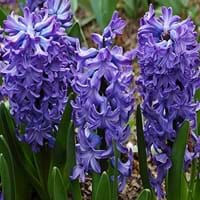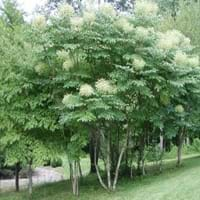Life Span
Perennial
Perennial
Type
Bulb or Corm or Tuber
Tree
Origin
Mediterranean, Western Asia
Mid-Atlantic United States, Southeastern United States, South-Central United States, Texas
Types
Not Available
Not Available
Habitat
Mediterranean region
Dappled Shade, Shady Edge, Woodland Garden Secondary
USDA Hardiness Zone
4-9
4-9
Sunset Zone
21,22
3a, 3b, 4, 5, 6, 7, 8, 9, 14, 15, 16, 17, 18, 19, 20, 21, 22, 23, 24
Habit
Clump-Forming
Thicket/Colonizing
Flower Color
White, Yellow, Red, Blue, Purple, Pink, Lavender, Violet
White, Green, Ivory
Flower Color Modifier
Bicolor
Bicolor
Fruit Color
Not Available
Purple, Black
Leaf Color in Spring
Green
Green, Blue Green, Dark Green
Leaf Color in Summer
Light Green
Green, Blue Green, Dark Green
Leaf Color in Fall
Several shades of Green
Yellow, Green, Purple, Blue Green, Dark Green, Yellow green
Leaf Color in Winter
Light Green
Not Available
Leaf Shape
Long slender
bipinnate
Plant Season
Spring, Winter
Spring, Summer, Fall, Winter
Sunlight
Full Sun, Partial Sun
Full Sun, Partial Sun
Type of Soil
Loam
Clay, Loam, Sand
The pH of Soil
Acidic, Neutral
Acidic, Neutral, Alkaline
Soil Drainage
Well drained
Well drained
Bloom Time
Early Spring, Spring, Late Winter, Indeterminate
Summer
Tolerances
Black Walnut Toxicity, Rabbit, Shade areas
Pollution, Soil Compaction
Where to Plant?
Container, Ground, Pot
Ground
How to Plant?
chipping, Offsets, scooping, Twin scaling, Vegetative
Cuttings, Divison, Seedlings
Plant Maintenance
Low
Medium
Watering Requirements
Medium
Needs high amount of water
In Summer
Lots of watering
Lots of watering
In Spring
Moderate
Moderate
In Winter
Average Water
Average Water
Soil pH
Acidic, Neutral
Acidic, Neutral, Alkaline
Soil Type
Loam
Clay, Loam, Sand
Soil Drainage Capacity
Well drained
Well drained
Sun Exposure
Full Sun, Partial Sun
Full Sun, Partial Sun
Pruning
Remove damaged leaves, Remove dead branches, Remove dead leaves
Remove damaged leaves, Remove dead branches, Remove dead leaves
Fertilizers
All-Purpose Liquid Fertilizer, General garden fertilizer, Time release fertilizer
All-Purpose Liquid Fertilizer
Pests and Diseases
Pests and diseases free
Aphids, Leaf spot, Mealybugs
Plant Tolerance
Black Walnut Toxicity, Rabbit, Shade areas
Drought
Flower Petal Number
Single, Double, Semi-Double
Single
Foliage Texture
Medium
Coarse
Foliage Sheen
Glossy
Matte
Attracts
Insects
Bees, Butterflies, Insects, Not Available
Allergy
Asthma
Skin irritation
Aesthetic Uses
Beautification, Bouquets, Cottage Garden, Landscape Designing, Showy Purposes
Borders, Woodland margins
Beauty Benefits
Not Available
Not Available
Environmental Uses
Not Available
Air purification
Medicinal Uses
Not Available
Alterative, Analgesic, Diaphoretic, Opthalmic
Part of Plant Used
Flowers
Bark, Leaves, Root
Other Uses
Decoration Purposes, Showy Purposes
Used as a potherb
Used As Indoor Plant
Yes
No
Used As Outdoor Plant
Yes
Yes
Garden Design
Bedding Plant, Container, Cutflower, Mixed Border, Rock Garden / Wall
Feature Plant, Foundation, Mixed Border
Botanical Name
Hyacinthus orientalis
ARALIA spinosa
Common Name
Hyacinth, common hyacinth, garden hyacinth, dutch hyacinth
American Angelica Tree, Devil's Walking Stick, Hercules' Club
In Hindi
ह्यचीन्थ
Devil's Walking Stick
In German
Hyazinthe
Teufelsspazierstock
In French
jacinthe
Walking bâton du diable
In Spanish
jacinto
Bastón del Diablo
In Greek
υάκινθος
Περπάτημα Stick διαβόλου
In Portuguese
jacinto
Vara andando de diabo
In Polish
hiacynt
Diabelski laska
In Latin
et hyacinthinas,
Virgam diaboli
Phylum
Magnoliophyta
Magnoliophyta
Class
Liliopsida
Magnoliopsida
Family
Liliaceae
Araliaceae
Clade
Angiosperms, Monocots
Angiosperms, Asterids, Eudicots
Tribe
Not Available
Not Available
Subfamily
Scilloideae
Aralioideae
Number of Species
Not Available
Season and Care of Hyacinth and Devil's Walking Stick
Season and care of Hyacinth and Devil's Walking Stick is important to know. While considering everything about Hyacinth and Devil's Walking Stick Care, growing season is an essential factor. Hyacinth season is Spring and Winter and Devil's Walking Stick season is Spring and Winter. The type of soil for Hyacinth is Loam and for Devil's Walking Stick is Clay, Loam, Sand while the PH of soil for Hyacinth is Acidic, Neutral and for Devil's Walking Stick is Acidic, Neutral, Alkaline.
Hyacinth and Devil's Walking Stick Physical Information
Hyacinth and Devil's Walking Stick physical information is very important for comparison. Hyacinth height is 10.20 cm and width 5.10 cm whereas Devil's Walking Stick height is 300.00 cm and width 460.00 cm. The color specification of Hyacinth and Devil's Walking Stick are as follows:
Hyacinth flower color: White, Yellow, Red, Blue, Purple, Pink, Lavender and Violet
Hyacinth leaf color: Green
Devil's Walking Stick flower color: White, Green and Ivory
- Devil's Walking Stick leaf color: Green, Blue Green and Dark Green
Care of Hyacinth and Devil's Walking Stick
Care of Hyacinth and Devil's Walking Stick include pruning, fertilizers, watering etc. Hyacinth pruning is done Remove damaged leaves, Remove dead branches and Remove dead leaves and Devil's Walking Stick pruning is done Remove damaged leaves, Remove dead branches and Remove dead leaves. In summer Hyacinth needs Lots of watering and in winter, it needs Average Water. Whereas, in summer Devil's Walking Stick needs Lots of watering and in winter, it needs Average Water.





